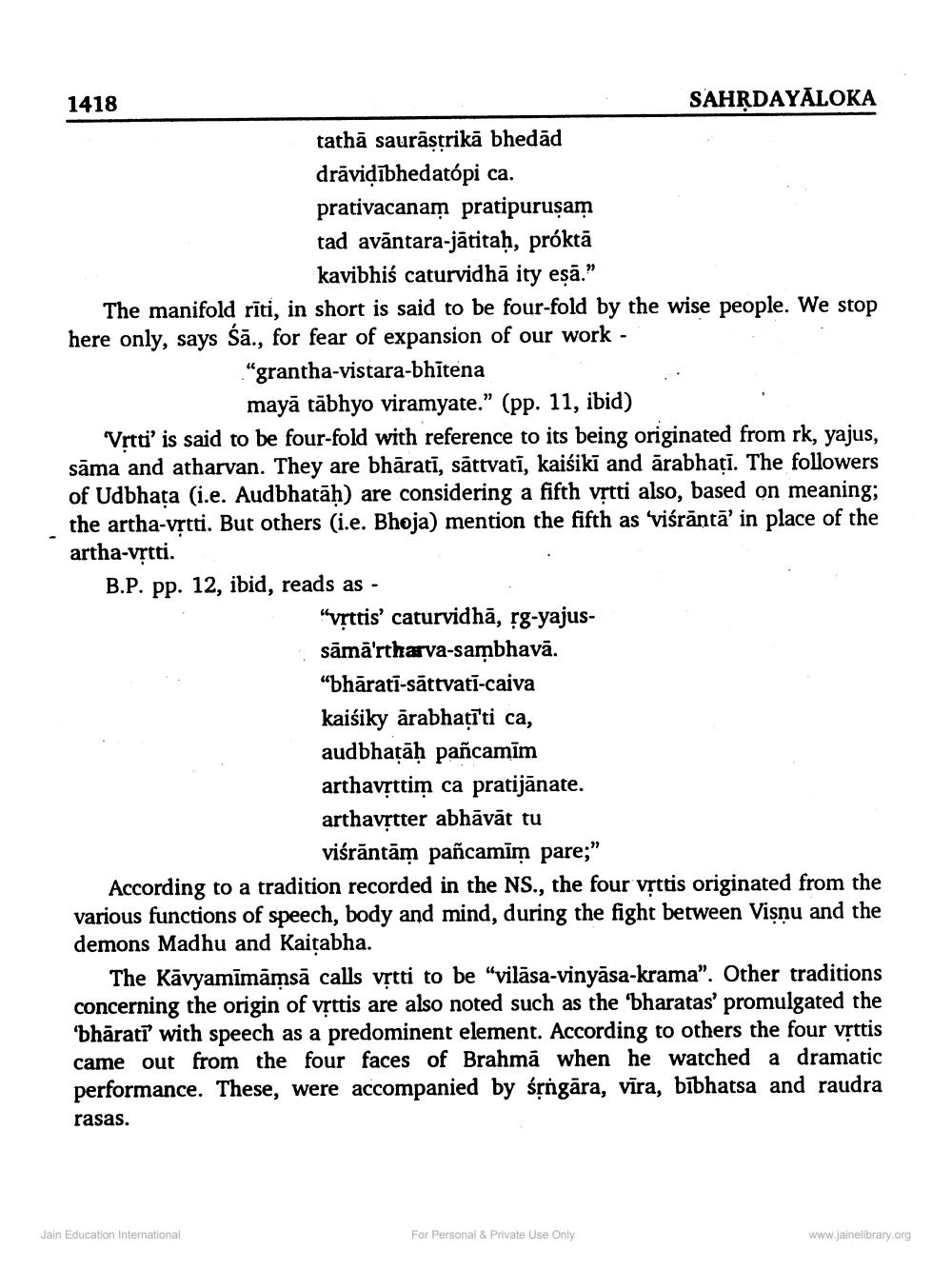________________
1418
SAHRDAYĀLOKA
tathā saurāstrikā bhedād drāviļībhedatópi ca. prativacanam pratipuruşam tad avāntara-jātitaḥ, próktā
kavibhiś caturvidhā ity esā.” The manifold rīti, in short is said to be four-fold by the wise people. We stop here only, says Sā., for fear of expansion of our work -
"grantha-vistara-bhitena
mayā tābhyo viramyate.” (pp. 11, ibid) Vịtti' is said to be four-fold with reference to its being originated from rk, yajus, sāma and atharvan. They are bhāratī, sāttvatī, kaiśiki and ārabhati. The followers of Udbhata (i.e. Audbhatāh) are considering a fifth vịtti also, based on meaning; the artha-vrtti. But others (i.e. Bhoja) mention the fifth as viśrāntā' in place of the artha-vștti. B.P. pp. 12, ibid, reads as -
"vșttis' caturvidhā, rg-yajussāmā'rtharva-sambhavā. "bhārati-sātrvati-caiva kaiśiky arabhatīti ca, audbhatāḥ pañcamīm arthavṛttim ca pratijānate. arthavștter abhāvāt tu
viśrāntām pañcamīm pare;" According to a tradition recorded in the NS., the four vrttis originated from the various functions of speech, body and mind, during the fight between Vişnu and the demons Madhu and Kaitabha.
The Kāvyamīmāmsā calls vịtti to be "vilāsa-vinyāsa-krama". Other traditions concerning the origin of vịttis are also noted such as the 'bharatas' promulgated the 'bhāratī with speech as a predominent element. According to others the four vrttis came out from the four faces of Brahmā when he watched a dramatic performance. These, were accompanied by śțngāra, vīra, bibhatsa and raudra rasas.
Jain Education International
For Personal & Private Use Only
www.jainelibrary.org




